
|   |

|   |
Of banis and gharanas - Ashish Mohan Khokar e-mail: khokar1960@gmail.com November 8, 2013 Two key events - poles and miles apart - one in Madras and the other in Bhubaneswar, in October, made me delve into the concept and context of banis and gharanas. Both, rather commonly used but easily misunderstood words. The one event in Madras was '50 years of Alarmel Valli's dancing career' which she had the class to celebrate by not dancing herself (as dancers often generally do!) but she platformed others (with help of upcoming journal and impresario Aalaap). The other event was in Odisha, where the guru bhakti of Guru Gajendra Panda made him mount the 7th Debaprasad Das Award with a 3-day music and dance festival. Both events were miles apart in content and context but both celebrated the concept of gurus and banis - one in Bharatanatyam and the other in Odissi. Both platformed the art of their gurus, as handed down to them: Alarmel Valli, a star legatee of the Pandanallur bani and Gajendra Panda, the solid legatee of Guru Debaprasad Das. Both didn't dance themselves but platformed other artistes instead, whom they thought fit for the occasion. Alarmel Valli presented the current music flavor of Madras sabhas, TM Krishna, and the Delhi Odissi diva, Madhavi Mudgal with her niece Arushi. Gajendra Panda presented and awarded Delhi's best known Bharatanatyam dancer Geeta Chandran; Chennai's activist-artiste Anita Ratnam; Seraikella Chhau's Shashadhar Acharya and senior Odissi Guru Sudhakar Sahoo. The Governor of Odisha did the honours, no less. And in Madras, film-maker Rajiv Menon gave the keynote address. Alarmel Valli - a complete and supremely gifted artiste - also possesses an academic bent of mind, enhanced by poetic prose. She is a polyglot, besides. Thus, it was natural that she added a panel discussion on the subject of banis on the concluding day. That nearly all of Madras turned up showed her reputation. Of course, this day coincided with ABHAI awards and thus a sizable lot of Bharatanatyam dancers went there. General audiences and rasikas thus benefitted and could ask several questions, which otherwise some over-the-hill active guru dominates by standing up (to be seen!) and delivers a discourse, rather than ask a meaningful question (as we often see in Natya Kala Conferences). 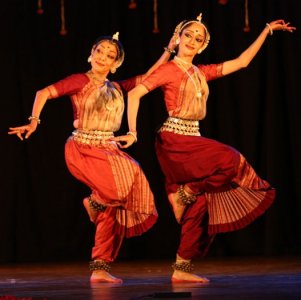 Madhavi Mudgal & Arushi Mudgal 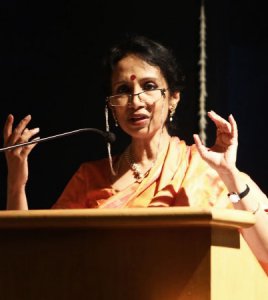 Alarmel Valli 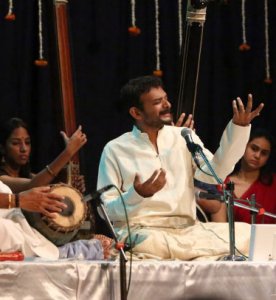 TM Krishna  Panel: L to R - Arundhati Subramaniam, Dr Nagaswami, Ashish Khokar, Anil Srinivasan, Bharadwaj Rangan and Alarmel Valli Banis in dance (especially of Bharatanatyam) is a rather current phenomenon, in comparison. They are just under 200 years old or less. This dovetails with the Tanjore Quartet dates and origins too. Few, if any guru can trace lineage to 7 continuous generations, as in Hindustani music gharanas. One reason could also be that nobody kept records. Or, simply, care. Also, some are not banis but schools like Kalakshetra get tom-tommed as one. Often, many bio-data claim "Kalakshetra bani." Fact is, many gurus taught at Kalakeshtra in the last 75 years of its existence, starting with Kattumannar Koil Muthukumaran Pillai, the first teacher/guru Rukmini Devi engaged, then Meenakshi Sundaram Pillai of Pandanallur who came next just for 6 months followed by succession of Kittappa, Ellappa, Chockalingam and others. By definition many gurus, including those of Kathakali, taught there. Is that ONE bani? What is a bani? Stylistic features, specific positions of hand, angles, body and torso; focus on music and musicality of body (or lack of it!) etc. Then too, one guru leaves his village and settles elsewhere. This is most true of Jaipur gharana of Kathak, who were all from Churu district in Bikaner and as the fortunes of that court declined they all came to Jaipur, where the courts and king prospered. Artistes and creepers need support, goes a popular Hindi dictum. Bharatanatyam or Odissi or Kathak are oceans and contain water like the common Bay of Bengal that connects all three places and forms, yet Madras beach is different from Odisha beaches. It is geography that decides history. Focusing on her vaadyar (Big difference thenů Most gurus called themselves plain teachers - acharya or vaadyars - not gurus and today 25 years olds have started calling themselves gurus!), the shy, understated Guru Subbaraya Pillai, whose 100th anniversary Valli was essentially celebrating more than her 50 years of dancing, she platformed the idea of banis. For this, she hosted a distinguished group of panelists headed by Dr. Nagaswami, he of the Natyanjali Chidmabaram and before that, Madras ASI fame; Valli herself, as a legatee or inheritor of a legacy; yours truly to give a historical perspective; Arundhati Subramaniam to give poetic (and esoteric) touches; Bhardawaj Rangan, the film critic of The Hindu and Anil Srinivasan, the happening pianist-composer, to moderate. By the involved audience response afterwards, it was evident this subject needs much more time to discuss and debate thread bare. What came of this assembly were pointers to several issues stated in above paras. Madras gatherings can be stormy but this gathering was calm (before the storm?). 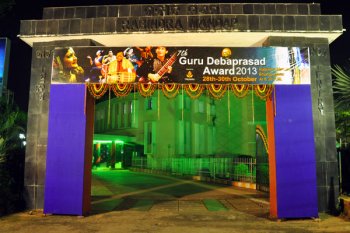 Grand entrance to Rabindra Mandap 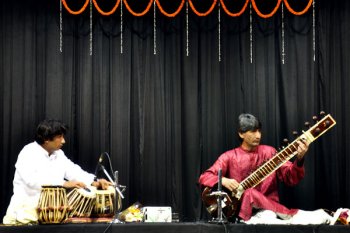 Ustad Saeed Zafar and Rashid Zafar 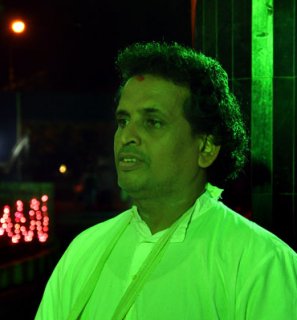 Guru Gajendra Panda 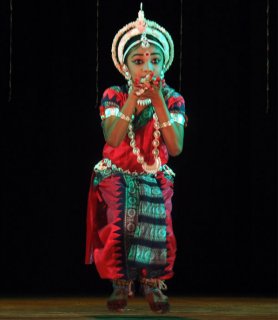 Child prodigy Ananya Kannan Odisha was far from calm, reeling as it was not from after effects of storm but a mega cyclone. Odisha still got its act together thanks to the tireless efforts of Guru Gajendra Panda, who single handedly (literally, for one wrist was fractured) got on with the mammoth task of mounting a 3 day major award and festival of dance and music. Gajendra is the Eklavya of Odishi or whatever you wish to call it today (Orissi was the original spelling corrupted to Odissi, now Odishi). He works alone and without much support, except good wishes of all who value honest and selfless work, full of integrity and purpose - and best of all - his choreographic skills far exceed others in the land and his students now reach and teach in lands as far as Tokyo, Thailand and Malaysia. One such talent came from Malaysia, a child of 10 called Ananya Kannan, whose effortless dancing regaled all, also with her intense abhinaya in Dashavatara. This dancer is a child prodigy, the next Sanjukata nani or Kamala rolled in one, for she does as good Bharatanatyam too. At home, in Odisha, he runs pillar to post to raise paltry sums to mount this annual fest, now in its 7th year, the Guru Debaprasad Das Awards. Not just for and in Odishi but for all the major forms. Thus, he gives the Deba da award not just to Odishi dancers and gurus but all major classical forms. In last few years such stalwarts as Minati Mishra, Ritha Devi, Yamini Krishnamurthy, Aloka Panikar, Tanushree Shankar, Shovana Narayan, Vyjayanthi Kashi have been feted and honoured. 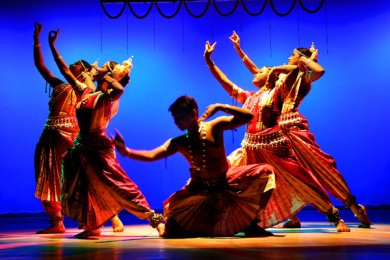 Tridhara's Gajanan Panchakam 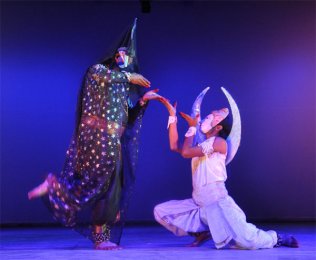 Shashadhar Acharya in Ratri 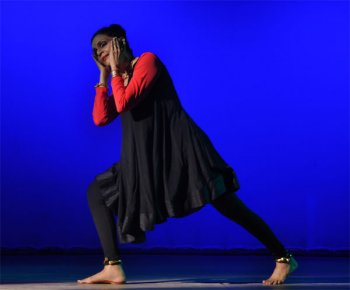 Anita Ratnam 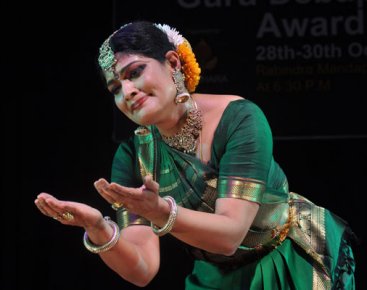 Geeta Chandran Anita Ratnam's stage inputs were first-rate with powerful music (Anil Srinivasan's piano set the tone), professional lights and colourful costumes. Her dance is cerebral and it is more dance-theatre. Shashadhar Acharya is a lone ranger of Chhau in Delhi and he showcased old items like Ratri - a love tale between night and the moon - so poetic, etched in dance memory by Rajkumar Suddhendra Singh Deo of the royal Seraikella gharana, and Mayura. Guru Sudhakar Sahoo at 78 decorated the stage with his benign presence. The Governor of Odisha, Dr. SC Jamir (famous as the longest serving CM of Nagaland before he became Governor of Goa, Maharashtra and now Odisha), did the honours and released the 15th anniversary of attendance and received The Dance Orissi, published by Abhinav, from which he referred to in his keynote address. Justice Inderjit Mahanty of the Cuttack High Court regaled the audience with past memories. 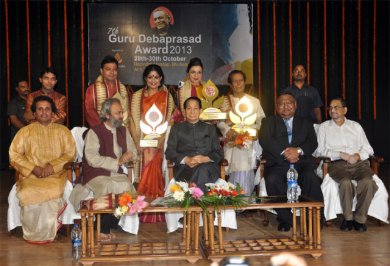 The awardees with the dignitaries 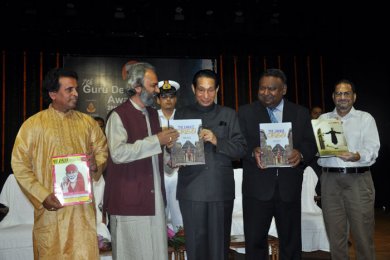 Dr. Jamir releases 15th anniversary issue of Attendance Banis today are blurring. Many quote reality of urban stress and times we live in to drive home the point serious guru-shishya relationship of yore is not doable today. When skype and dvd gurus are in the market, when students don't make time and gurus are mere factories for functions projecting themselves, how can banis continue? Does it matter anyway? Today a student also learns from multiple teachers/quasi gurus, so how can the stamp of one individual bani or guru remain? What's relevance of a school, a style, a bani? Is it now a mere memory of the past or a meaningful reference point? Is it mere nomenclature or an important sub culture within a form? Banis are important so long as gurus are gurus and not merely money making machines. There is nothing wrong with making money but there is a difference of degree. In olden days, gurus were not in the market. They sat in their villages and all famous names trudged to them to seek knowledge. Ram Gopal, Mrinalini, US Krishna Rao all went to their guru's village to learn. Today, the guru has come to the city market. Or shall we say, the market has come to some gurus! End result shows: Cloning is easy; making a true artiste is not. That proves yet another point: Great artistes are born, not made.  Ashish Mohan Khokar is a reputed critic, historian, editor and publisher of Indian dance. Having learnt several styles, he served many cultural bodies like the Delhi State Academy: Festivals of India in many countries; INTACH (under PM Gandhi as Chair); Martand Singh Consultants before taking to arts writing as main critic of the Times of India for 20 years. For last 15 years he has edited India's only yearbook on dance - attendance. He has authored over 40 books on Indian arts, heritage and spirituality. He has helped revive male solo dancing by instituting awards, organizing academic discourses and mentoring many talents. He is associated with several universities like Baroda, Bangalore, Berlin and Bombay and is a widely read columnist on the net. More details on attendance-india.com Post your comments Pl provide your name and email id along with your comment. All appropriate comments posted with name and email id in the blog will also be featured in the site. |